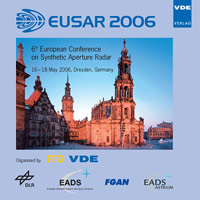Permanent Scatterers: Comparison of identification methods
Conference: EUSAR 2006 - 6th European Conference on Synthetic Aperture Radar
05/16/2006 - 05/18/2006 at Dresden, Germany
Proceedings: EUSAR 2006
Pages: 4Language: englishTyp: PDF
Personal VDE Members are entitled to a 10% discount on this title
Authors:
López-Quiroz, Penelope; Nicolas, Jean Marie; Tupin, Florence (GET - Télécom - Paris - CNRS UMR 51-41,46 rue Barrault - 75013 Paris - France)
Briole, Pierre (Institut de Physique du Globe, 4 Place Jussieu - 75005 Paris - France)
Chaabane, Ferdaous (SupCom Tunis, Tunesia)
Abstract:
Though radar image interferometry is a relatively recent technique, it is largely used by the remote sensing community because it is cheaper than most of the traditional methods of relief and surface deformation analysis. The performance of this technique is limited by temporal and geometrical decorrelation and atmospheric inhomogeneities. These perturbations can be corrected using coherent pixels over long time intervals (called Permanent Scatterers). They can be detected over long time series of SAR images and be used to monitor ground movement, to model atmospheric deformation and to achieve atmospheric effects remotion on SAR interferograms. The aim of this paper is to study the link between two apparently different Permanent Scatterers identification methods, by means of a theoretical and a practical analysis. The first section recalls the principle of both methods underlinig their differences for the stable scatterer selection (amplitude or coherence or phase analysis) while the second section compares the extracted pixels on a region of interest, the Gulf of Corinth, and analyses the relationship between the two sets of pixels.


